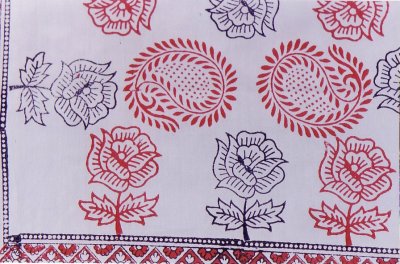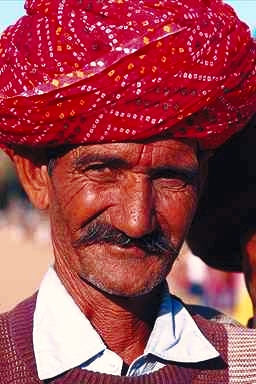Fabric Arts of India
K.L. Kamat/Kamat's Potpourri
Hand-printed Fabric Designs
Indian textiles of great merit have captured the world market for well over two thousand years. The art of fine weaving, the varied processes of painting and dyeing and the art of hand and loom embroideries have been perfected by Indians through the ages. Brocades from Varanasi and Surat, Patola from Ahmedabad, Ik-kat from Orissa, Baluchar from West Bengal, Chanderi from Madhya Pradesh and Kornad from South India are specialties of Indian fabrics offering quaint and beautiful designs. Color and design are the distinguishing marks of Indian fabrics. The forms of Indian costume have undergone changes, gradually and imperceptibly, introducing an element of freshness all the time. The enhancement of the beauty of fabrics through various processes such as weaving, dyeing, printing, embossing and embroidery is of considerable importance in Indian costumes, especially in the sari. All these beautiful handicrafts have been practiced in India for centuries, and evidence to this effect is also abundantly available. The tie-and-dye textiles of Jamnagar, Kota, Jaipur and Madurai are famous for their elegant designs and colors.
The Indian fabric arts have survived ever-changing fashion and have retained their popularity. Both cotton and silk are used in the production of tie-and-dye textiles and it is not the fineness of the cloth, but the attractive, pleasing designs and the appealing use of color that make them popular. Tie-and-dye fabric is popularly known as Bandhni in Gujarat, and Choongdi elsewhere. Fine linen or silk-like chiffon, georgette, cambric, long-cloth, and pure white mull - with or without a zari border - are used for tie-and-dye.

Rajasthani Man Wearing a Bandhni Print Turban
![]()

